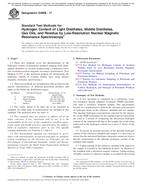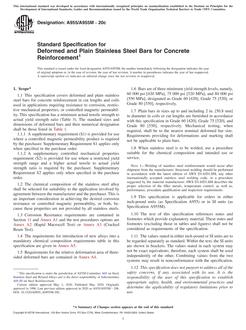1.1 This is a guide to risk-based corrective action for the protection of ecological resources and supplements the RBCA process (Guide E 2081). The primary objective of the Eco-RBCA process is to provide a flexible framework for a tiered approach to ERA and risk management decision making at chemical release sites. To this end, available guidance documents from various federal and state agencies were reviewed and their common attributes incorporated into this guide, where possible. The Eco-RBCA process complements existing technical and regulatory ecological risk guidance (see 4.2). In particular, it is intended to be compatible with the USEPA programmatic guidelines for ERA (1) , guidance for the Superfund program (2), and other USEPA (3) risk assessment and corrective-action programs. Eco-RBCA might also be used in conjunction with corrective action strategies that include human health issues (for example, Guide E 2081).
1.2 Chemical release sites vary greatly in terms of complexity, physical and chemical characteristics, and the risk that they might pose to ecological resources. The Eco-RBCA process, as described in Guide E 2081, recognizes this variability and incorporates a tiered approach that integrates site assessment, response actions, and remedial actions with ERA. The process begins with relatively simple analyses in Tier 1 and, if necessary, proceeds to more detailed evaluations in Tier 2 or Tier 3. The process of gathering and evaluating data is conducted in such a manner that only those data that are necessary for a given tier’s decision making are collected at each tier. Hence, this can facilitate effective use of resources and reduce initial data requirements.
1.3 Eco-RBCA is intended to provide a framework for sites not covered under regulatory programs and for sites under regulatory programs that lack specific guidance. Eco-RBCA may also provide a useful framework to help merge several possible approaches into a single approach when multiple regulatory programs apply. The user should be aware of the federal, state, and local corrective action programs and policies that are applicable for the site and, regardless of the program, that agency approvals might be required to implement the process for completing ERAs.
1.4 Various TPDs will need to be made regarding the aspects of Eco-RBCA. These TPDs may cover both the philosophical and methodological aspects, from what values to protect to exactly how the Eco-RBCA process will be performed. TPDs may affect every stage of the process, from the initial site assessment to development and monitoring of the remedy. It is the responsibility of the user to identify the appropriate TPDs. Section 7, Appendix X2, and Guide E 2081 provide more detail regarding TPDs in the Eco-RBCA process.
1.5 The general performance standard for this document requires that:
1.5.1 Applicable TPDs be identified, beginning at the initiation of the Eco-RBCA process, and as appropriate, at later stages;
1.5.2 Data used in the Eco-RBCA process be of sufficient quantity and quality to answer the questions and support the decisions made at the tier of investigation;
1.5.3 Site assessments be distinguished into tiers of appropriate levels of evaluation;
1.5.4 Actions taken should integrate the Eco-RBCA process for the protection of relevant ecological receptors and habitats and RBCA for the protection of human health (see Guide E 2081), as appropriate;
1.5.5 Applicable federal, state, and local laws and regulations be followed; and
1.5.6 Potential adverse effects on relevant ecological receptors and habitats be considered when selecting remedial action alternatives. The remedial action alternatives should be consistent with the TPDs and the RBCA process (see Guide E 2081).
1.6 Ecological resources are the focus of this guide; risks to human health are addressed for petroleum releases and chemical releases in other ASTM RBCA standards (Guides E 1739 and E 2081). There are many features common to all three of the RBCA guides. These three guides share the basic elements of RBCA: (1) site assessment; (2) tiered evaluations of exposure, effects, and risk; (3) risk-based decision making; and (4) response, remedial action, and monitoring. There are a number of distinctions between human health and ecological risk assessments. For example, while human health risk assessments focus on individuals, evaluations of ecological risk typically focus on populations, communities, or ecosystems. Exceptions are species or habitats designated for special protection (for example, endangered species). Biological data to support an ERA are more amenable to direct field observation than are human exposure and epidemiological data.
1.7 The Eco-RBCA process addresses current and potential future risks to relevant ecological receptors and habitats at chemical release sites. It is not intended to apply to current permitted releases and permit applications.
1.8 Eco-RBCA focuses on chemical stressors. However, the user may need to consider biological or physical stressors at the site or effects from chemical sources unrelated to the site.
1.9 The process described in this guide integrates the principles of current ERA practices with site assessment activities and remedial-action selection to ensure that the risk management decision protects ecological resources. Fig. 1 illustrates the following activities in Eco-RBCA and those described in Section 7 (7.1-7.10):
1.9.1 Step 1 – Initial Site Assessment;
1.9.2 Step 2 – Decision Point;
1.9.3 Step 3 – Tier 1 Ecological Risk Assessment;
1.9.4 Step 4 – Tier 1 Decision Point;
1.9.5 Step 5 – Tier 2 Ecological Risk Assessment;
1.9.6 Step 6 – Tier 2 Decision Point;
1.9.7 Step 7 – Tier 3 Ecological Risk Assessment;
1.9.8 Step 8 – Tier 3 Decision Point;
1.9.9 Step 9 – Implementing the Remedial Action Program; and
1.9.10 Step 10 – Monitoring Programs (7.10).
1.9.11 The above steps can be applied in a flexible manner. It may not be necessary to conduct a full tier of evaluation if existing site information indicates that a subsequent tier is more applicable to address site-specific concerns. Where experience indicates that a more sophisticated assessment is warranted at a site, the user may elect to proceed conceptually through any earlier tiers to conduct a site-specific assessment typical of Tier 2 or Tier 3. Additionally, the decision points in Steps 4, 6, and 8 allow the user to exit the tiered evaluation process and select the appropriate remedial action once adequate information is available for decision making.
1.10 This guide is organized as follows:
1.10.1 Section 2 lists referenced ASTM documents;
1.10.2 Section 3 defines terminology used in this guide;
1.10.3 Section 4 describes the significance and use of this guide;
1.10.4 Section 5 describes the tiered approach to the Eco-RBCA process;
1.10.5 Sections 6 and 7 presents Eco-RBCA procedures in a step-by-step process; and
1.10.6 The reference section provides all documents cited in this guide.
1.11 This guide also includes the following appendices, which are provided as supplemental information and are not included as mandatory sections of this guide:
1.11.1 Appendix X1 presents information related to risk management issues;
1.11.2 Appendix X2 presents issues regarding TPDs;
1.11.3 Appendix X3 presents information on the activities occurring in each tier of the Eco-RBCA process;
1.11.4 Appendix X4 describes screening criteria and how they can be applied within the Eco-RBCA framework;
1.11.5 Appendix X5 presents the selection and use of relevant ecological screening benchmarks;
1.11.6 Appendix X6 includes two examples of the application of the Eco-RBCA framework; and
1.11.7 Appendix X7 presents information on uncertainty and its role in Eco-RBCA.
1.12 The values stated in either SI units or inch-pound units are to be regarded separately as standard. The values stated in each system may not be exact equivalents; therefore, each system shall be used independently of the other. Combining values from the two systems may result in non-conformance with the standard.
Product Details
- Published:
- 03/01/2009
- Number of Pages:
- 61
- File Size:
- 1 file , 740 KB


